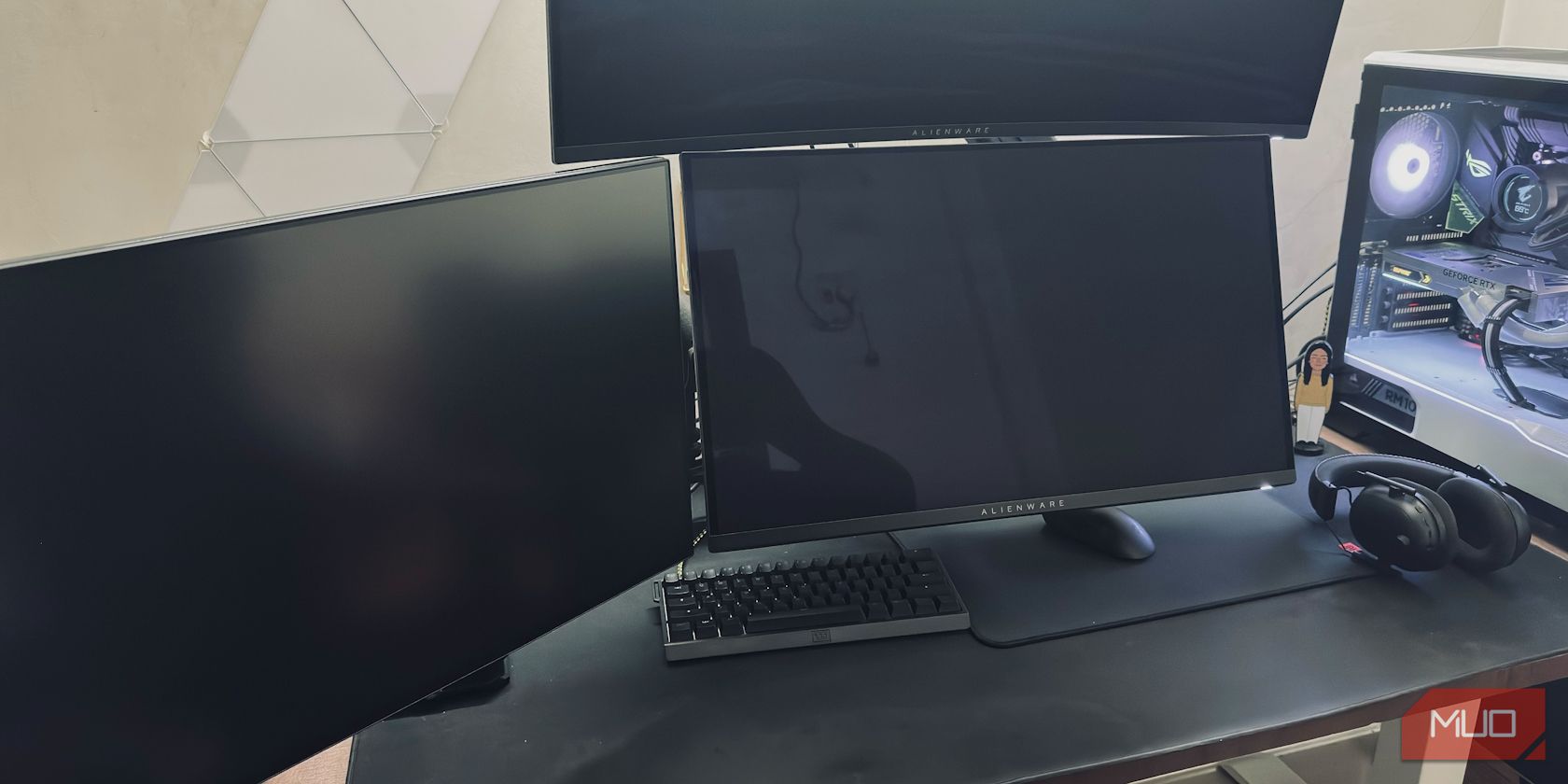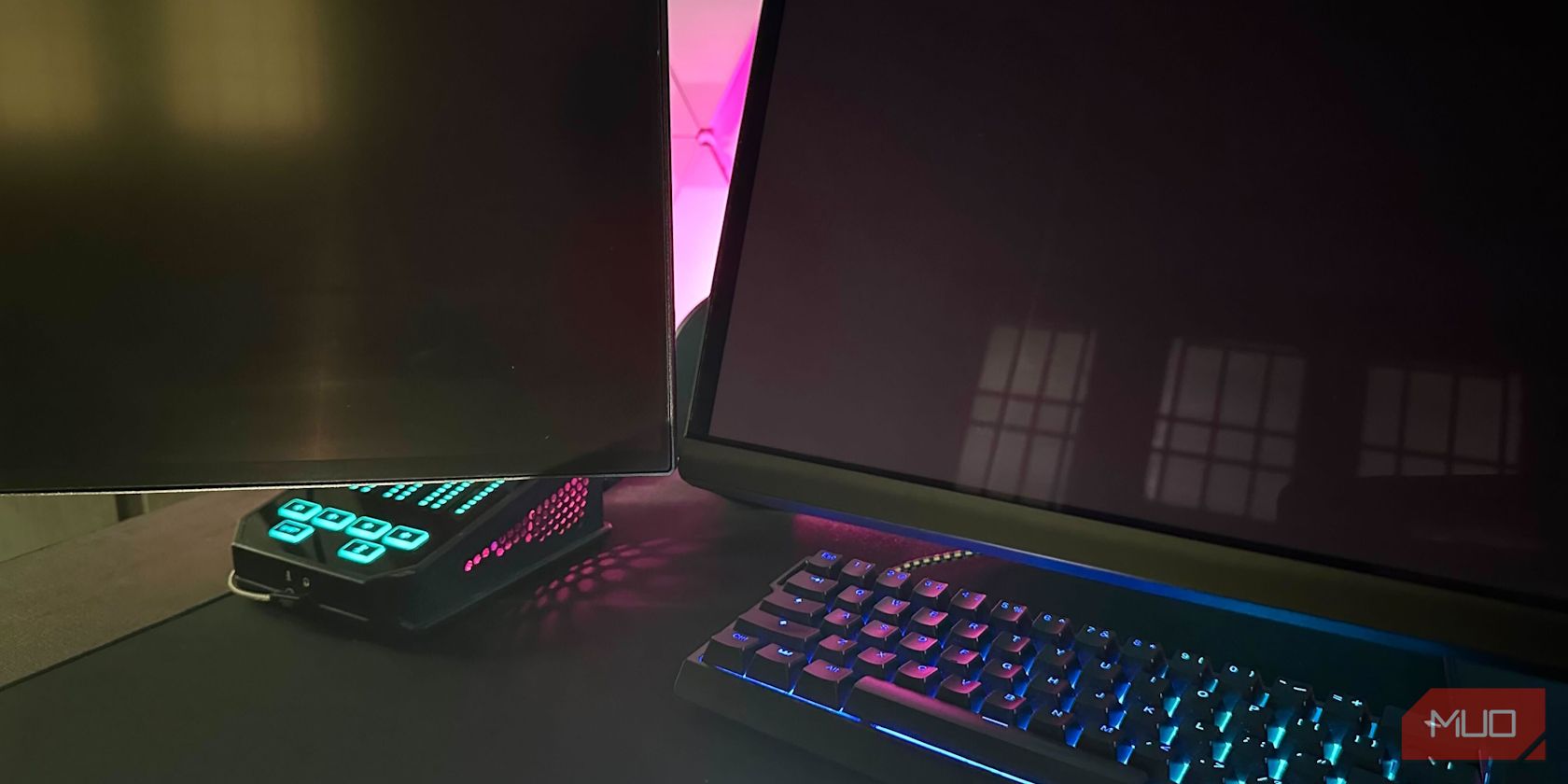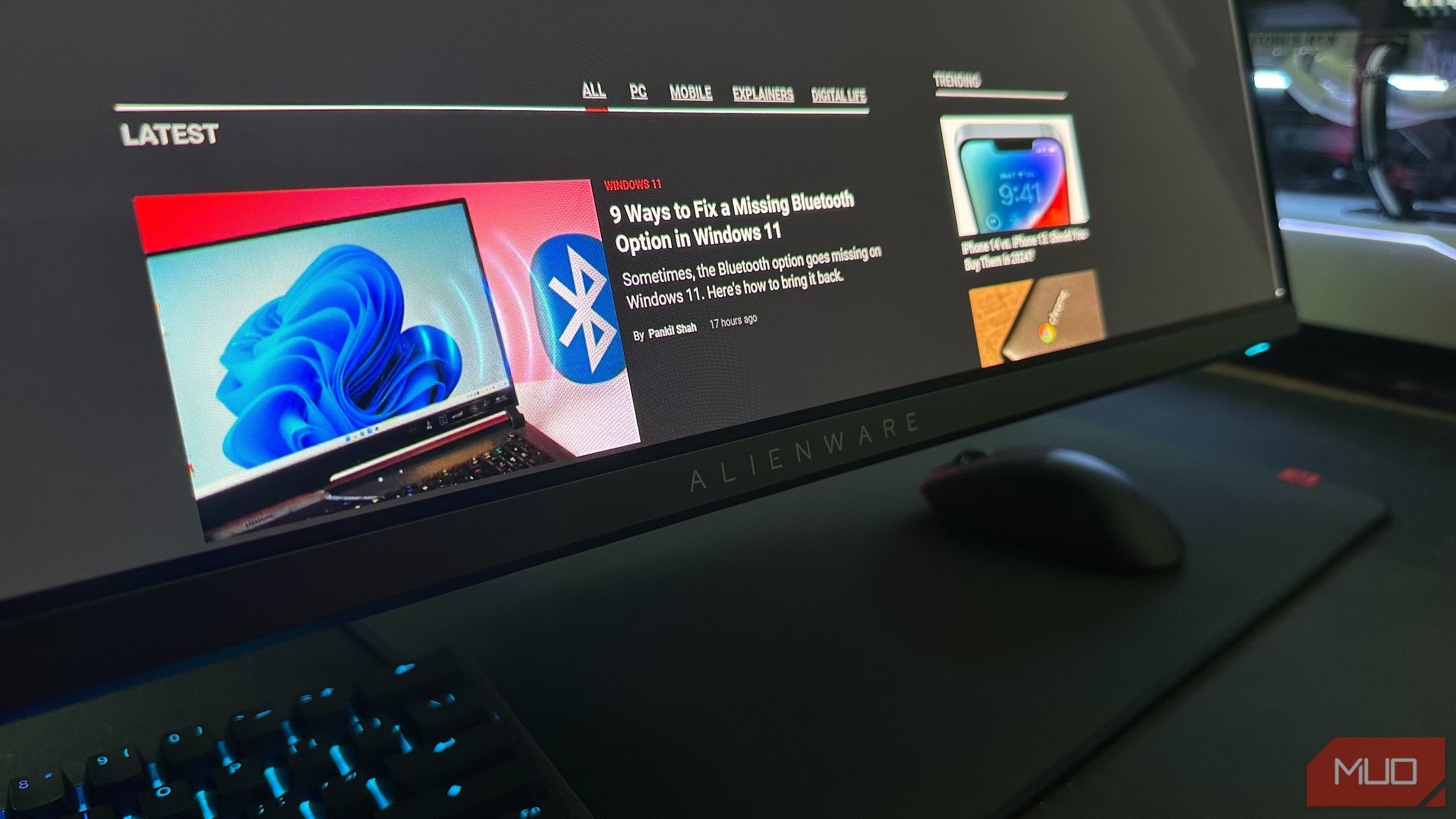
Avoid Wrongful OLED Purchases with These Tips

Avoid Wrongful OLED Purchases with These Tips
Quick Links
- OLED Panel Options: QD-OLED and WOLED
- LG’s WOLED Panels Have a Matte Coating
- Samsung’s QD-OLED Panels Have a Magenta Tint
- QD-OLED Monitors Offer Slightly Better Text Clarity
- Which Brands Sell QD-OLED and WOLED Monitors?
- Which OLED Monitor Is Right for You?
Key Takeaways
- Choose between QD-OLED and WOLED monitors depending on your use case.
- QD-OLED monitors are better suited for low-light conditions, whereas WOLED monitors show their strengths in bright rooms.
- Dell, MSI, and Gigabyte use QD-OLED panels exclusively, whereas Acer, Corsair, and Viewsonic use LG’s OLED panels. Asus offers both QD-OLED and WOLED monitors.
Not all OLED monitors are created equally. Some are better suited for darker rooms, whereas others work well in brighter rooms. So, be careful before you splurge on a new OLED monitor, whether you plan to use it for gaming, work, or media consumption.
OLED Panel Options: QD-OLED and WOLED
Several brands sell OLED monitors today, but only two companies manufacture all these OLED panels: LG Display and Samsung Display. LG Display makes WOLED panels, whereas Samsung Display makes QD-OLED panels .
PC peripheral makers source OLED panels from these two companies and sell them by making their own changes to the monitor’s design, software, etc. But what’s the difference between LG’s WOLED and Samsung’s QD-OLED panels?
Both panels offer all the standard benefits of OLED technology , but they’re manufactured differently, as they vary in panel composition and subpixel structure.
LG’s WOLED uses an OLED layer that emits white light and has a fourth white subpixel on top of red, green, and blue. On the other hand, QD-OLED’s OLED layer emits blue light, which passes through a Quantum Dot layer. This Quantum Dot layer modifies the light wavelength for the red and green subpixels.
As a result, you’ll notice some minor differences in picture quality and color reproduction between these two panels. But when it comes to monitors, there are more noteworthy differences to worry about, which we’ll discuss below.
LG’s WOLED Panels Have a Matte Coating

Hamlin Rozario/MakeUseOf
As of this writing, all OLED panels that use LG’s WOLED panels have a matte coating on the screen. This has been a controversial topic among consumers, as a matte screen coating isn’t ideal for OLED displays; it negatively impacts the picture quality and contrast ratio.
LG’s matte screen coating is a bit harsh, and it can often make the picture appear grainy. Samsung’s QD-OLED panels, on the other hand, typically use a glossy/semi-gloss coating, just like most OLED TVs on the market.
However, LG’s matte coating has its benefits. For instance, if you work in a bright room, like in a studio, LG’s matte coating does an excellent job of minimizing reflections. Monitors that use Samsung’s QD-OLED panels will reflect any light source in front of them. However, this shouldn’t be a problem if the light sources are behind the monitor.
So, it comes down to where you plan to use your OLED monitor. If you plan to use it in a light-controlled room, go for a QD-OLED monitor, as you wouldn’t have to worry about coating grain. Otherwise, a WOLED monitor may be better for you.
Samsung’s QD-OLED Panels Have a Magenta Tint

Hamlin Rozario/MakeUseOf
Although I prefer Samsung’s glossy QD-OLED panels, they’re not perfect. Samsung’s QD-OLED panels have a magenta tint, which is most noticeable when ambient light sources are in front of the monitor. This is due to the lack of a polarizing layer in the panel structure, meaning any ambient light bounces off it.
Therefore, when you watch dark content on a QD-OLED monitor in a bright room, the blacks won’t appear as true blacks even if the individual pixels are off. The monitor’s bezels are far more noticeable, which isn’t the kind of experience you’d want with an OLED display. This isn’t an issue with LG’s WOLED panels, thanks to their anti-reflective matte coating.
However, if light sources are behind the monitor, you’ll struggle to notice the magenta tint. So, in a dark room, they perform just as well as WOLED monitors in terms of black levels.
QD-OLED Monitors Offer Slightly Better Text Clarity

Hamlin Rozario/MakeUseOf
Text clarity is an issue on both types of OLED monitors, especially if you use Windows. That’s because Windows uses a subpixel text rendering technique that suits traditional LCD displays with RGB stripe subpixel layouts.
Unfortunately, both QD-OLED and WOLED panels have different subpixel layouts. WOLED panels use an RGBW stripe layout, whereas QD-OLED displays use a triangular RGB subpixel structure. Since these subpixel structures deviate from the common RGB stripe layout, the text quality will be lower compared to a standard LCD monitor.
On a QD-OLED monitor, you’ll see color fringing on text, with green outlines at the top of the text and pink outlines at the bottom. This is more noticeable at 1440p resolution than 4K, especially when you get closer to the display. On WOLED monitors, you’ll see some shadowing on the left and right edges of text.
From my experience, I disliked the shadowing on my WOLED monitor more. Plus, the QD-OLED monitor handles smaller font sizes better. However, both Samsung and LG have tried to address text clarity issues with their newer generation of OLED panels.
I currently own an Alienware AW3423DW , which uses a first-generation QD-OLED panel, and an Alienware AW2725DF , which uses a third-generation QD-OLED panel. I can confidently say color fringing is less of an issue on the newer panel.
Which Brands Sell QD-OLED and WOLED Monitors?
You now know that Samsung manufactures QD-OLED panels and LG makes WOLED panels. But which brands use Samsung’s panels and which ones use LG’s? Let’s find out.
Brands That Use Samsung’s QD-OLED Panels
Here are the popular monitor brands that use Samsung’s QD-OLED panels, along with the latest models they offer as of April 2024:
- Samsung Odyssey: OLED G9 G95SC (1440p/240Hz);OLED G8 G85SB (1440p/175Hz)
- Dell Alienware: AW2725DF (1440p/360Hz);AW3225QF (4K/240Hz)
- MSI: MPG 271QRX (1440p/360Hz);MPG 321URX (4K/240Hz)
- Asus ROG: PG32UCDM (4K/240Hz);PG49WCD (1440p/144Hz)
- Gigabyte Aorus: FO32U2P (4K/240Hz);FO27Q3 (1440p/360Hz)
Brands That Use LG’s WOLED Panels
Here are the top brands that have used LG’s WOLED panels to date, along with their most recent offerings:
- LG UltraGear: 32GS95UE (4K/240Hz or 1080p/480Hz)
- Asus ROG: PG34WCDM (1440p/240Hz)
- Acer Predator: X27U (1440p/240Hz)
- Corsair Xeneon: 27QHD240 (1440p/240Hz)
- ViewSonic: XG272-2K-OLED (1440p/240Hz)
As you can see, Asus is the only company, as of early 2024, that makes both WOLED and QD-OLED monitors. But this may change down the line. If you want to know whether a monitor uses a QD-OLED or WOLED panel, read the product description or spec sheet.
You won’t see the term “QD-OLED” anywhere in the product description of an OLED monitor that uses LG’s panel. LG Display also doesn’t use the term “WOLED” to market its panels.
Which OLED Monitor Is Right for You?
Are you still having a tough time deciding between QD-OLED and WOLED monitors? Let me make this simple for you.
If you use your computer in a dimly lit or dark room and there are no ambient light sources, like 3D light panels , in front of the monitor, buy a QD-OLED monitor without second thoughts. You won’t notice the magenta tint at all, and you’ll appreciate the glossy screen that maintains crystal-clear image quality.
However, if you prefer working or gaming with the lights on or have a window next to your PC, go for a WOLED monitor instead. Its matte coating will minimize reflections, and the screen will remain pitch black even in a bright room. Just make sure you don’t sit too close to the monitor so you don’t notice the coating grain.
- Title: Avoid Wrongful OLED Purchases with These Tips
- Author: William
- Created at : 2024-09-08 16:49:54
- Updated at : 2024-09-15 16:46:30
- Link: https://games-able.techidaily.com/avoid-wrongful-oled-purchases-with-these-tips/
- License: This work is licensed under CC BY-NC-SA 4.0.